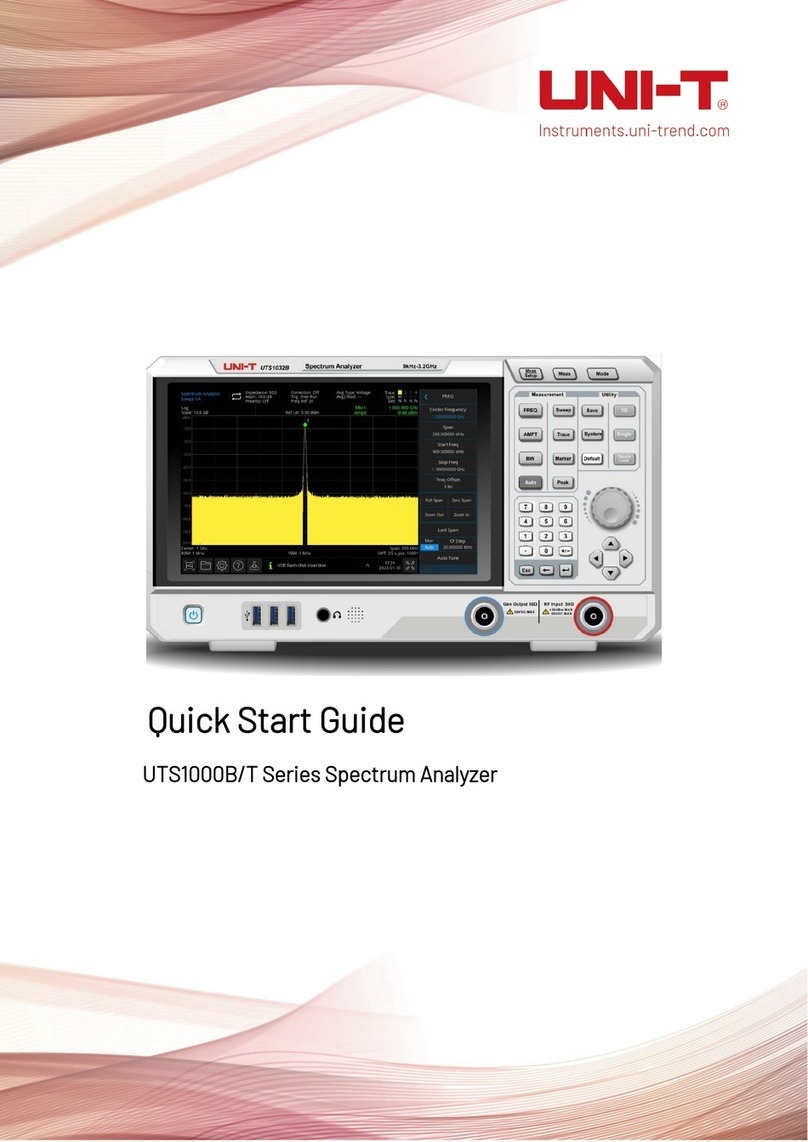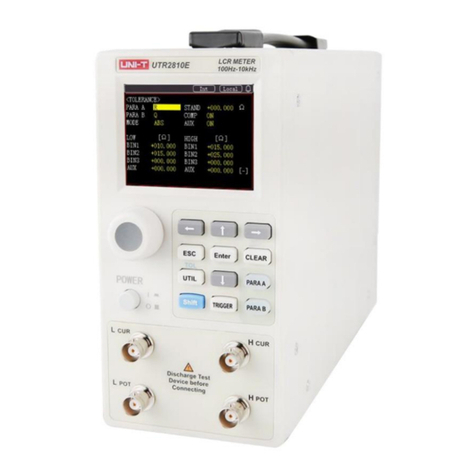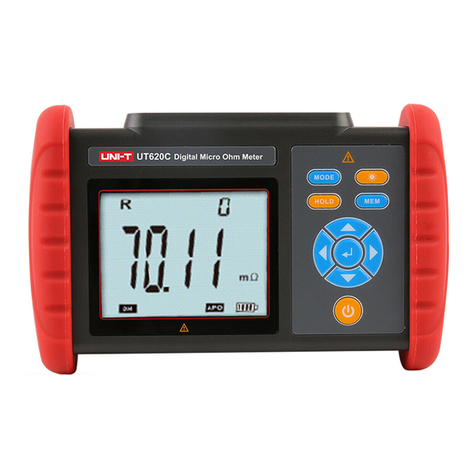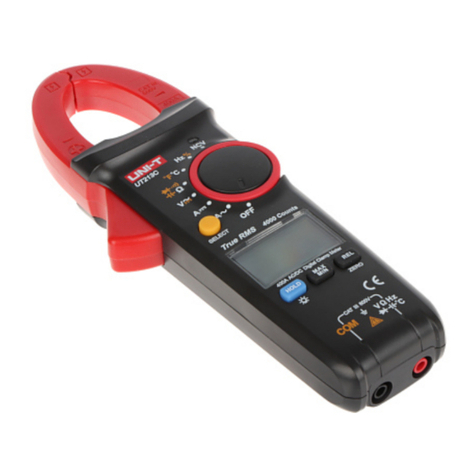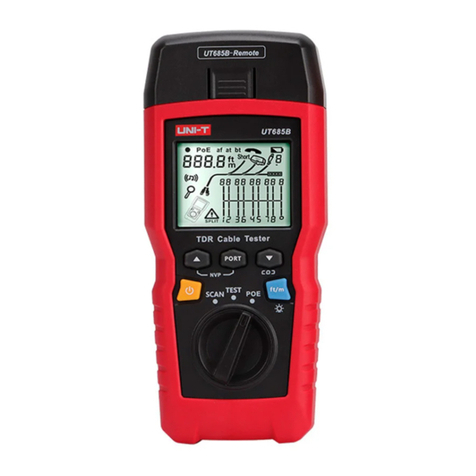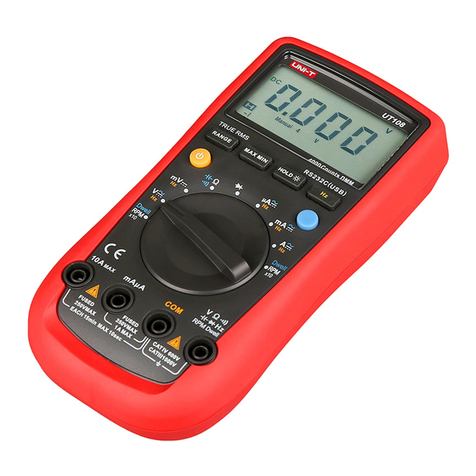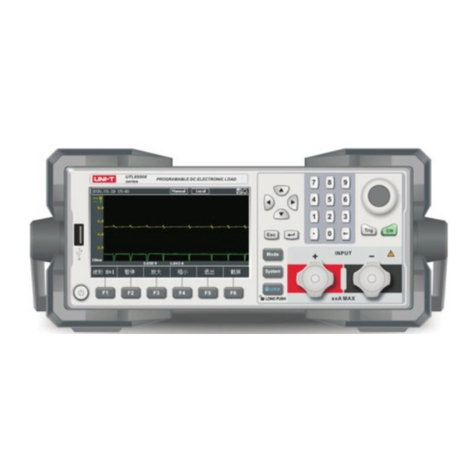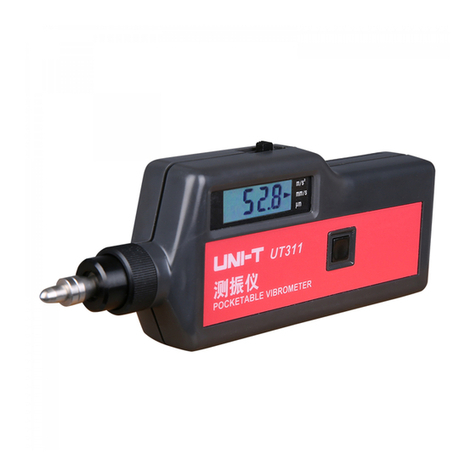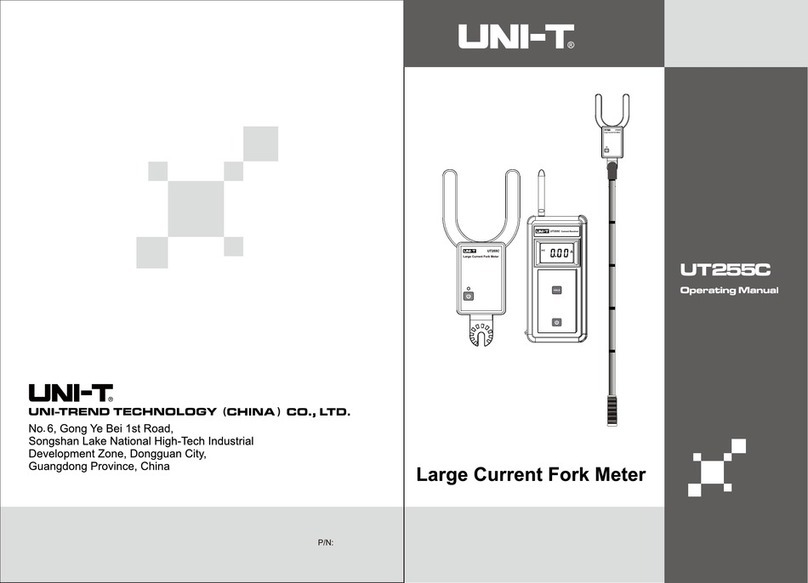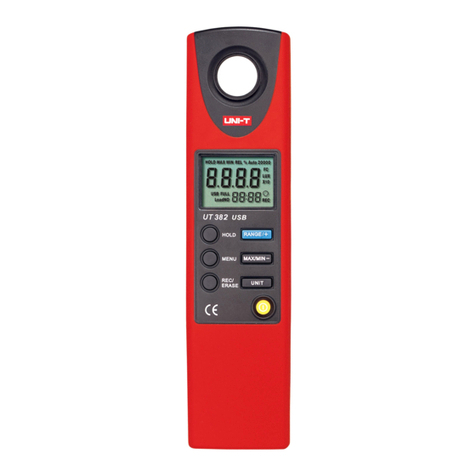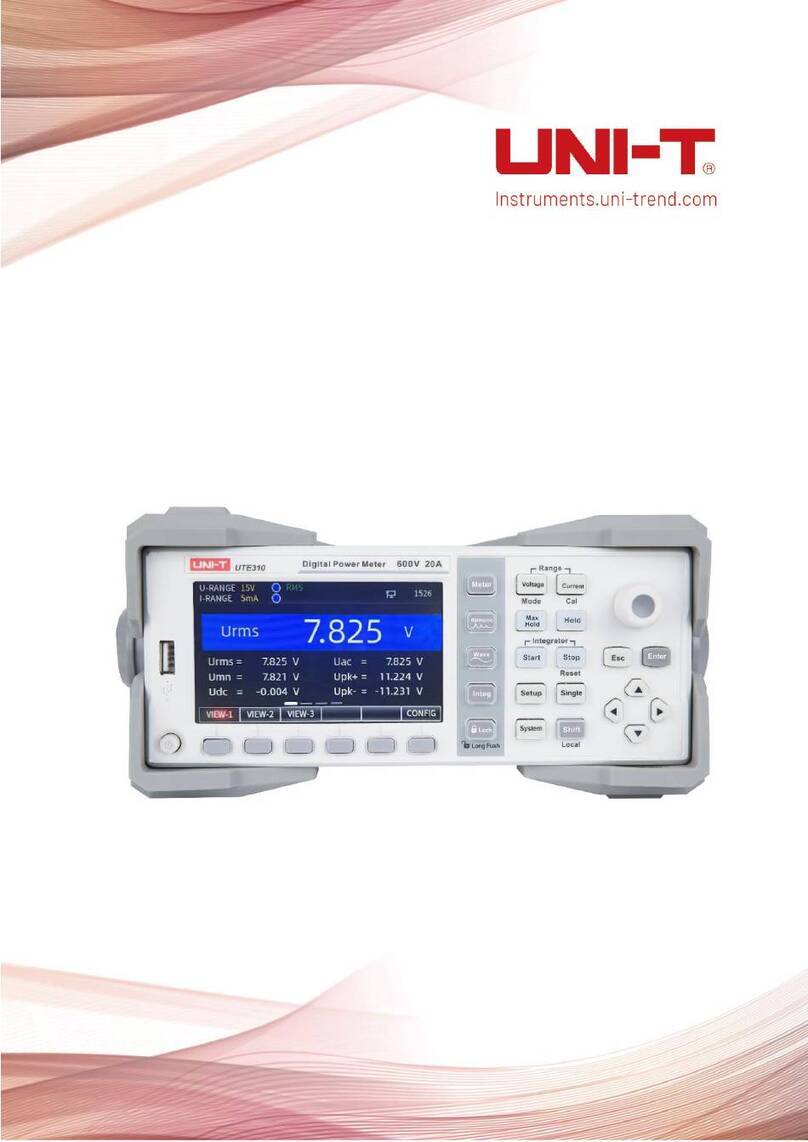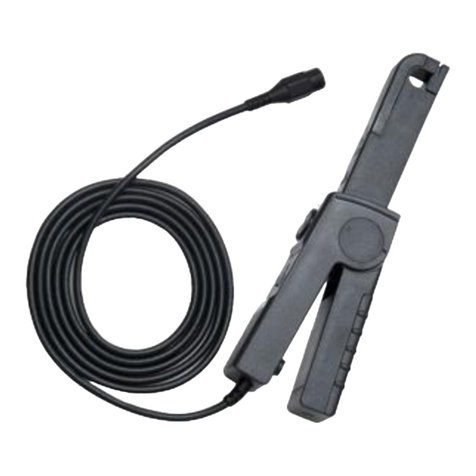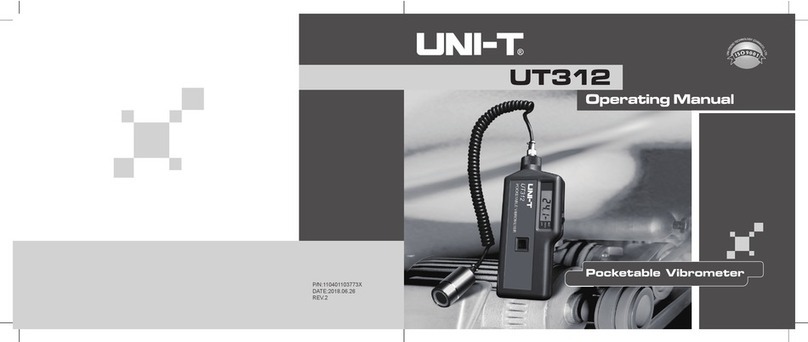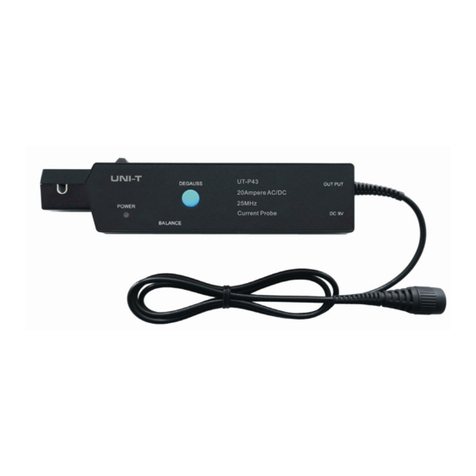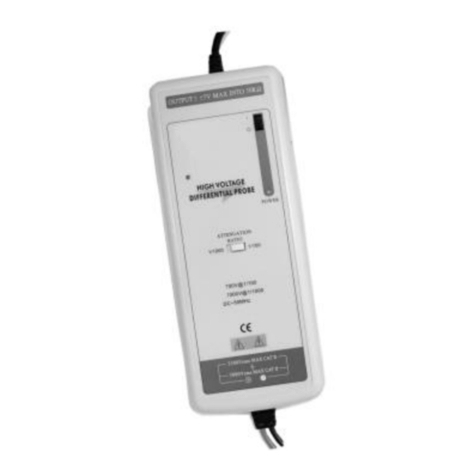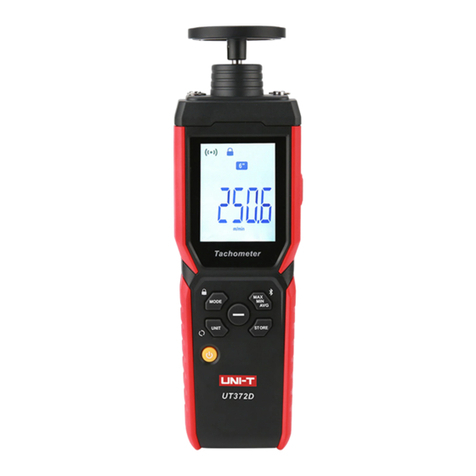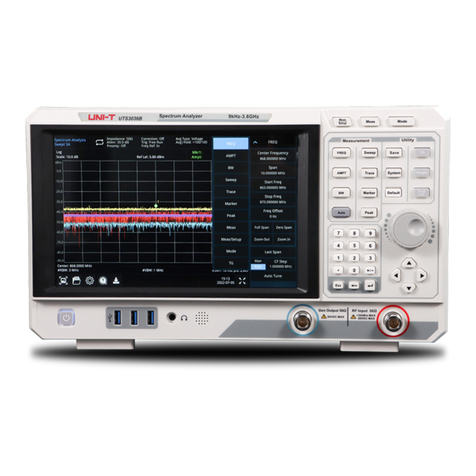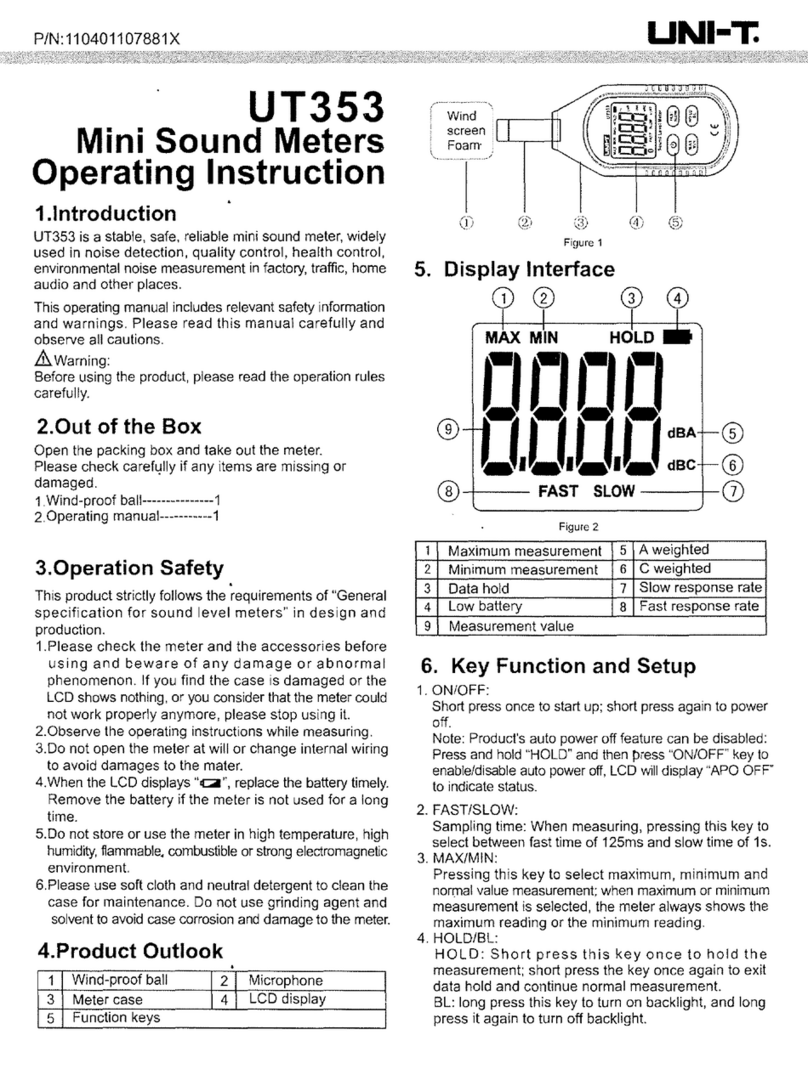
8
Make sure that the waveform measuring equipment connected to this device's output
terminal (BNC) is equipped with a protective earthling with double-insulation
construction.
Do not allow the device to get wet, and do not take measurements with wet hands. This
may cause an electric shock.
If the waveform measuring instrument being connected to the output terminal (BNC) on
this device is equipped with any other measurement terminals, take the following
precautions to ensure that the other instrument does not form a bridge between the probe
and any hazardous live part of a part.
Isolate the terminal to which the probe is connected from other terminals on the measuring
instrument using basic insulation conforming to the measurement category, working
voltage, and pollution degree requirements of the circuit being tested.
If basic insulation requirements cannot be met between the terminal to which this device is
connected and other terminals of the measuring instrument, make sure that the voltage
input to the measurement terminal does not exceed the Separated Extra-Low Voltage
Earthed.
Read and observe all warnings and precautions relating to electrical safety for the
measuring instrument being connected to the probe.
To avoid damage to the device, protect it from vibration or shock during transport and
handling, and be especially careful to avoid dropping.
Do not store or use the device where it could be exposed to direct sunlight, high
temperature, humidity, or condensation. Under such conditions, the device may be
damaged and insulation may deteriorate so that it no longer meets specifications.
Before using the device the first time, verify that it operates normally to ensure that the no
damage occurred during storage or shipping. If you find any damage, contact your dealer
or CYBERTEK representative.
This device is not designed to be entirely water- or dust- proof. To avoid damage, do not
use it in a wet or dusty environment.
The sensor head is a precision assembly including a molded component, a ferrite core, and
a Hall Effect element. It may be damaged if subjected to sudden changes in ambient
temperature, or mechanical strain or shock, and therefore great care should be exercised in
handling it.
The matching surfaces of the sensor head are precision ground, and should be treated with
care. If these surfaces are scratched, performance may be impaired.
Foreign substances such as dust on the contact surfaces of the sensor head can cause
acoustic resonance and degrade measurement, so it should be cleaned by gently wiping
with a soft cloth.
To avoid damaging the sensor cable and power supply cable, do not bend or pull the
cables.
When the power is on, keep closed, except when clamping them onto the conductor to be
